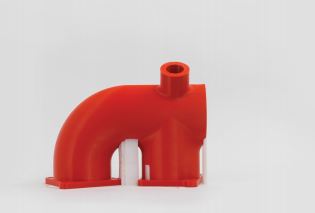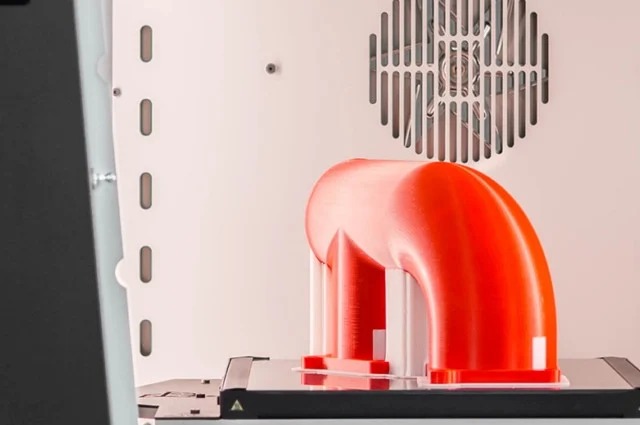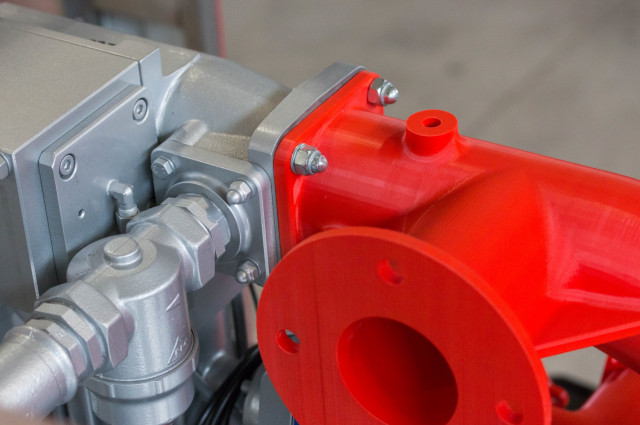EVOK3D General Conditions of Sale of Equipment
1 General
1.1 Definitions
Evok3d.com: shall mean Evok3d.com Pty. Ltd.
Equipment: shall mean the goods and/or services supplied by Evok3d.com to the Purchaser.
GST and Taxable Supply: shall have the meaning given in A New Tax System (Goods and Services Tax) Act 1999 (Cth)
Purchaser: shall mean the entity who has registered its details electronically with Evok3d.com through Evok3d.com’s website, and has subsequently ordered Equipment and accepted these terms and conditions through the log-on portal on the Evok3d.com website, and shall include executors, administrators, successors and permitted assigns.
1.2 An order placed by the Purchaser shall give rise to a binding contract (“Agreement”) which shall include these General Conditions of Sale (“Conditions”) and any other conditions stated in the quotation/offer.
1.3 Notwithstanding any prior or subsequent furnishing by the Purchaser of a purchase order that may contain any provision inconsistent with or purporting to vary or reject any of these Conditions, these Conditions shall prevail.
1.4 The provisions of these Conditions shall apply to any supply of Equipment whether in whole or in multiple deliveries.
2 Order
2.1 The Agreement may be cancelled, varied or suspended only by notice in writing to Evok3d.com. In the event of such cancellation, variation or suspension the Purchaser shall compensate Evok3d.com for any costs or loss incurred plus a cancellation fee in the amount of 20% of the quoted price. Payment under this clause shall not exceed the total quoted price.
2.2 Equipment will be accepted for credit only by prior agreement or to the extent that it has been wrongly or over supplied. Equipment manufactured or purchased to special order cannot be returned or credited unless wrongly or over-supplied by Evok3d.com. Returned Equipment shall be delivered to Evok3d.com free of charge, in good order and condition, unused and in the original packaging, accompanied by a despatch note stating the original invoice number, date of supply and reason for return. Except where equipment has been wrongly or over supplied, a charge as determined by Evok3d.com will be made for handling costs.
3 Price
3.1 Unless we agree otherwise the quoted price does include the cost of freight, transport, unloading, installation and commissioning.
3.2 Sales Tax, GST or other Government Imposts
-
The price offered is exclusive of Sales Tax, GST or other Government imposts. Should sales tax, GST or other Government imposts become applicable the Purchaser shall pay those amounts in addition to the prices offered in accordance with Clause 4.1.
-
If GST is payable in relation to a Taxable Supply the amount payable for that Taxable Supply will be the amount payable in accordance with this agreement plus GST.
4 Payment
4.1 Unless the Purchaser has existing credit facilities with Evok3d.com payment must be made in full at the time of order by credit card.
4.2 For existing credit facility holders, the following shall apply:
-
terms for payment are fourteen (14) days from the date of issue of invoice. Payment due to Evok3d.com shall be made in full, free of set off and without deduction or withholding.
-
The extension and maintenance of credit facilities is at the absolute discretion of Evok3d.com.
-
If the Purchaser delays the payment of any invoice or does not pay the invoice in full, Evok3d.com in addition to all other rights to which Evok3d.com is entitled at law, will defer manufacture or delivery or cancel any outstanding balance of the order.
5 Specifications and Drawings
5.1 All descriptive and shipping specifications, drawings, dimensions and weights detailed on Evok3d.com’s website are approximate only. In any event descriptions, illustrations and data contained in catalogues, price lists and other advertising matter are intended only to present a general idea of the work described therein and none of these shall form part of the contract. The Purchaser shall make, and shall be deemed to have made, such enquiries it deems necessary with Evok3d.com to verify any details prior to placing an order.
6 Delivery
6.1 Delivery times are quoted in good faith and as accurately as Evok3d.com is able to estimate but are not guaranteed unless expressly done so separately in writing by Evok3d.com.
6.2 If delivery and/or manufacture is delayed or threatened to be delayed for any reason Evok3d.com will notify the Purchaser of the extent (or likely extent) of the delay and the reason for it.
6.3 The Purchaser must inspect the goods within and notify Evok3d.com of any shortages or damages in writing not later than five (5) days after delivery. Evok3d.com will not accept any claims for shortages in any delivery that is received after this period.
6.4 Evok3d.com reserves the right to make partial deliveries against an order and to separately invoice same unless otherwise agreed in writing. Payment thereof will fall due in accordance with clause 4.
7 Packing
7.1 Unless otherwise agreed the Equipment will be packed in a manner sufficiently robust to ensure safe delivery and in accordance with any other express requirements of this agreement. Any special packing required by the Purchaser will need to be arranged and paid for separately by the Purchaser.
8 Risk
8.1 Risk in the equipment and thereupon risk of damage, loss or deterioration of the Equipment from any cause whatsoever shall pass to the Purchaser at delivery.
9 Title
9.1 Notwithstanding that the risk in the Equipment shall pass to the Purchaser as provided in Clause 8.1 title and property in the Equipment shall remain with Evok3d.com until such time as full payment is made to Evok3d.com for all amounts due under this Agreement.
9.2 In the event that the Purchaser fails to make payment for the Equipment in accordance with the terms of this Agreement then Evok3d.com shall have the right to recover from the Purchaser the Equipment.
10.1 Defects
Upon written notification from the Purchaser, Evok3d.com at its sole discretion shall replace or repair within a reasonable time defects caused by Evok3d.com’s failure to comply with the Agreement, or those arising from faulty design, material or workmanship provided that:
-
such equipment has been properly handled and used and has been operated and maintained in accordance with instructions issued by Evok3d.com;
-
such defects are not caused by incorrect lubricants, faulty civil or mechanical work, unsuitable soil conditions and all other chemical, electrochemical and/or electrical influences which have not been provided for in the Agreement;
-
such defects (whether apparent or not) occur within a period of twelve (12) months after delivery; and
-
Evok3d.com is notified in writing within seven (7) days of the alleged defect occurring; and
-
the Purchaser has fulfilled its obligations under this Agreement.
10.2 Repair or replacement
-
Where the Purchaser has notified Evok3d.com of an alleged defect he shall if Evok3d.com so requires, promptly, and at his own expense and risk return the defective parts(s) to the factory (as specified by Evok3d.com) free-of-charge for repair.
-
The removal of the defective part and the installation of any repaired or replacement part shall be performed by the Purchaser at his own expense. Where any defective part(s) has been replaced, such part(s) shall become the property of Evok3d.com
10.3 Evok3d.com shall not be liable for goods of a consumable nature, such as cables, antennas or those having a low rated service life or where any unauthorised repair or alteration to the Equipment has been performed by the Purchaser.
11.1 Terms implied by law
- Evok3d.com excludes all conditions, warranties and terms implied by the Competition and Consumer Act 2010 or any other law or custom, except any such implied condition, warranty or term the exclusion of which would contravene any law or cause all or any part of this clause 11 to be void.
- Evok3d.com makes no representation to the Purchaser concerning the suitability of the goods supplied or the fitness for the purpose supplied to the Purchaser. The Purchaser relies on its own inquires, skill and judgement concerning these matters.
- Evok3d.coms liability to the Purchaser for breach of a condition, obligation, right, warranty or representation implied into this agreement that cannot be excluded but can be limited, will (at Evok3d.com’s option) be limited to:
- Providing to the Purchaser equivalent goods or services to those goods or services to which that breach relates; or :
- Paying the Purchaser the cost of acquiring goods or services which are equivalent to the goods or services to which that breach relates
11.2 Exclusion of indirect or consequential loss.
A party will not be liable to the other under this Contract for any loss, expense, damage or liability which is not direct or does not flow naturally from the relevant breach of this Contract (including loss of profit and loss of revenue and pure economic loss), even if at the time the Purchaser and Evok3d.com entered into this Contract the loss, expense, damage or liability may reasonably be supposed to have been contemplated by both the Purchaser and Evok3d.com as a probable result of the breach.
12.1 In the event of any claim or claims in respect of any infringement of a Registered Design, Trademark, Copyright or Letters Patent, relating to any part of the Equipment (other than a part based on a design specified by the Purchaser), Evok3d.com will at their expense defend the claim or either replace or modify such part with a non-infringing part or procure for the Purchaser the right to use such a part provided Evok3d.com is given the full opportunity to conduct all negotiations in respect of such claim and such claim shall not be accepted by the Purchaser without prior written consent of Evok3d.com. In no event shall Evok3d.com incur any liability for losses arising from the use or non-use of any infringing part.
12.2 The Purchaser warrants that any design or instructions furnished or given by him shall not be such as to cause Evok3d.com to infringe any Letters Patent, Registered Design, Trademark or Copyright in the execution of the order.
12.3 The patent and design rights held by Evok3d.com and relating to Equipment shall remain the absolute property of Evok3d.com and Evok3d.com’s designs and drawings shall not be reproduced or disclosed without Evok3d.com’s written consent. The Purchaser will not, without Evok3d.com’s previous written consent, copy or allow others to copy any drawings, equipment or part thereof supplied by Evok3d.com.
13 Bankruptcy, Liquidation
13.1 Notwithstanding any other provisions within the Agreement and in particular Clause 4 any outstanding payment shall become due immediately upon the Purchaser committing any act of bankruptcy or committing any act which entitles any person to apply to wind up the Purchaser or if a liquidator, administrator, controller, mortgagee in possession, receiver or like officer is appointed over part or all of the Purchaser’s assets.
13.2 If the Purchaser enters or threatens to enter into bankruptcy, liquidation or any other form of insolvency, administration, management or receivership or the Purchaser enters into any scheme or arrangement with its creditors, Evok3d.com may by notice to the Purchaser:
-
immediately terminate the contract or suspend manufacture or delivery of any Equipment then outstanding; and
-
retain any security given or moneys paid by the Purchaser and apply this against the assessed loss and damages incurred by Evok3d.com.
14 General
14.1 Legal costs - Each party must pay its own legal and other costs and expenses of negotiating, preparing and executing this Agreement.
14.1 Waiver - A failure or delay in exercising any right, power or remedy by a party does not operate as a waiver. A waiver is not valid or binding on the party granting the waiver unless made in writing.
14.2 Survival – All provisions of the Agreement which are capable of having effect after the termination of the Agreement shall remain in full force and effect despite any termination of the Agreement.
14.3 Notices
-
All notices given by a Party pursuant to the Agreement must be in writing and must be delivered by email, prepaid post, by hand or by facsimile to the last known address of the other party.
-
If a notice is deemed to be given on a day which is not a Business Day in the place which the notice is received, or is deemed to be received after 4.00 pm in that place, the notice will be deemed to be given on the next Business Day in that place.
14.4 Severance - If any provision of the Agreement is held to be invalid or unenforceable by a court of law or other competent authority, that provision shall be severed and all other provisions of the Agreement shall continue in full force and effect.
14.5 Business Day – If a payment or other act is required to be made or done under the Agreement on a day which is not a Business Day, the payment or act must be made or done on the next following Business Day.
14.6 Entire understanding
-
This Agreement contains the entire understanding between the parties as to the subject matter of this Agreement.
-
All previous negotiations, understandings, representations, warranties, memoranda or commitments concerning the subject matter of this Agreement are merged in and superseded by this Agreement and are of no effect. No party is liable to any other party in respect of those matters.
-
No oral explanation or information provided by any party to another:
-
affects the meaning or interpretation of this Agreement; or
-
constitutes any collateral agreement, warranty or understanding between any of the parties.
14.7 Interpretation – In these Conditions:
-
a reference to the Agreement or any other document includes any variation or replacement of either of them;
-
a reference to a clause is a reference to a clause of these Conditions;
-
headings are for ease of reference and do not affect interpretation;
-
the singular includes the plural and vice versa;
-
a reference to “$” or “dollars” is a reference to Australian dollars; and
where a word or phrase is defined, other parts of speech and grammatical forms of that word or phrase shall have corresponding meanings
14.8 Relationship of parties
This Agreement is not intended to create a partnership, joint venture or agency relationship between the parties.
15 Wassenaar Arrangement
15.1 The sale of the Equipment is fully conditional upon its end use being in Australia or the destination as previously agreed between Evok3d.com and the Purchaser. Other than as previously agreed should the Equipment be destined for export or re-export then:
-
Evok3d.com Pty Ltd. shall be notified in each case; and
-
There must be no impediments regarding export from Australia imposed by the Wassenaar Arrangement;
15.2 Any breach or alleged breach of this condition gives Evok3d.com the right (without the need for notice or further explanation) to immediately suspend, postpone or cancel, at its sole discretion, the order or any undelivered portion thereof.




